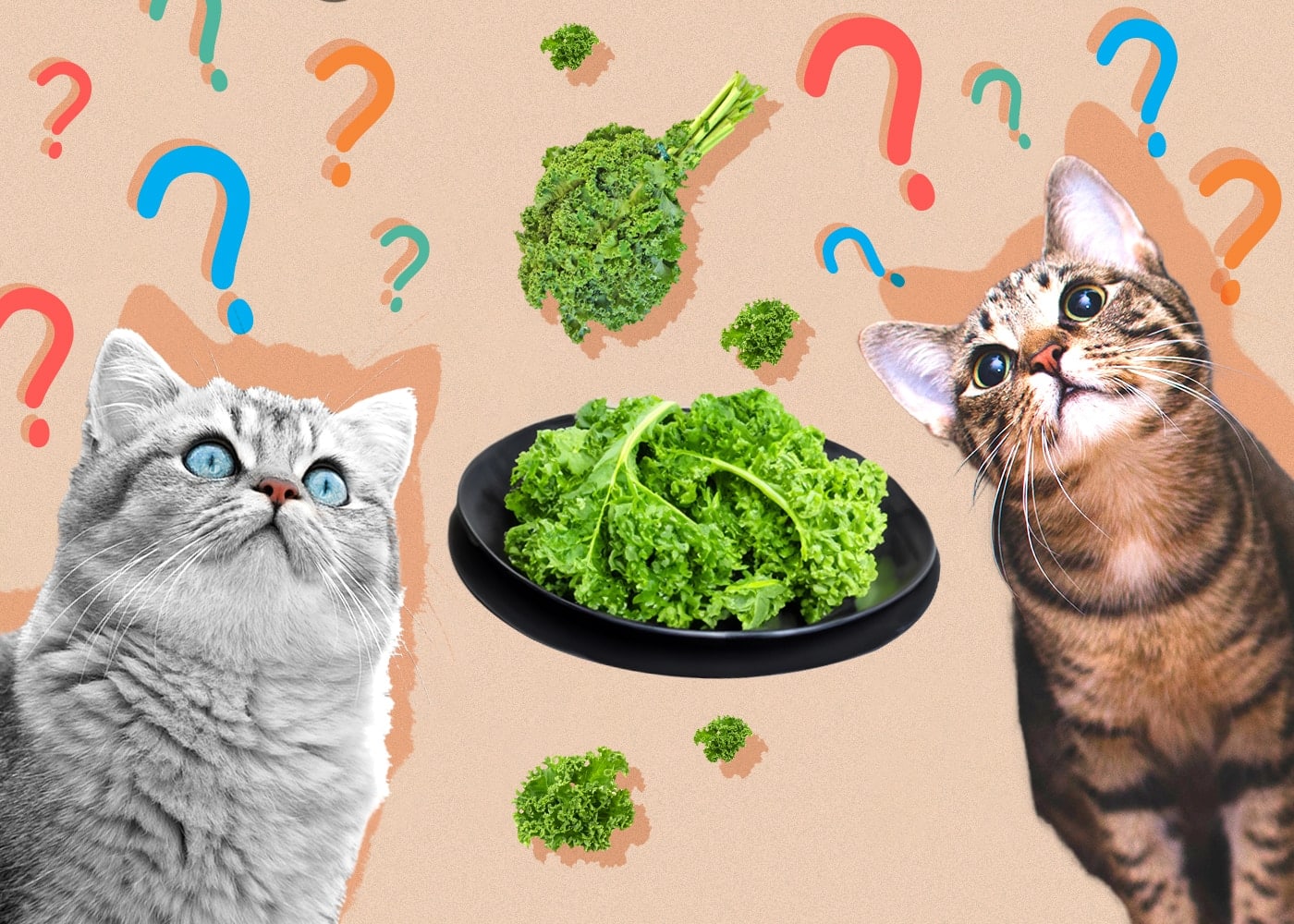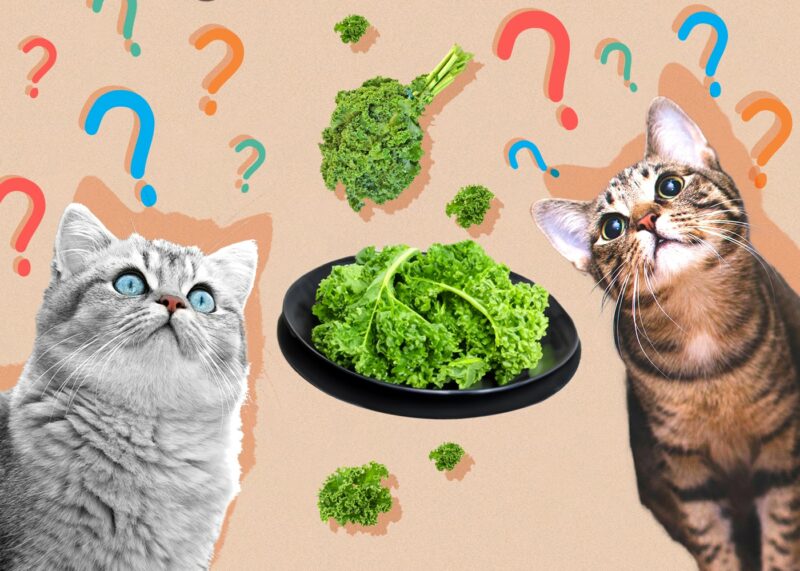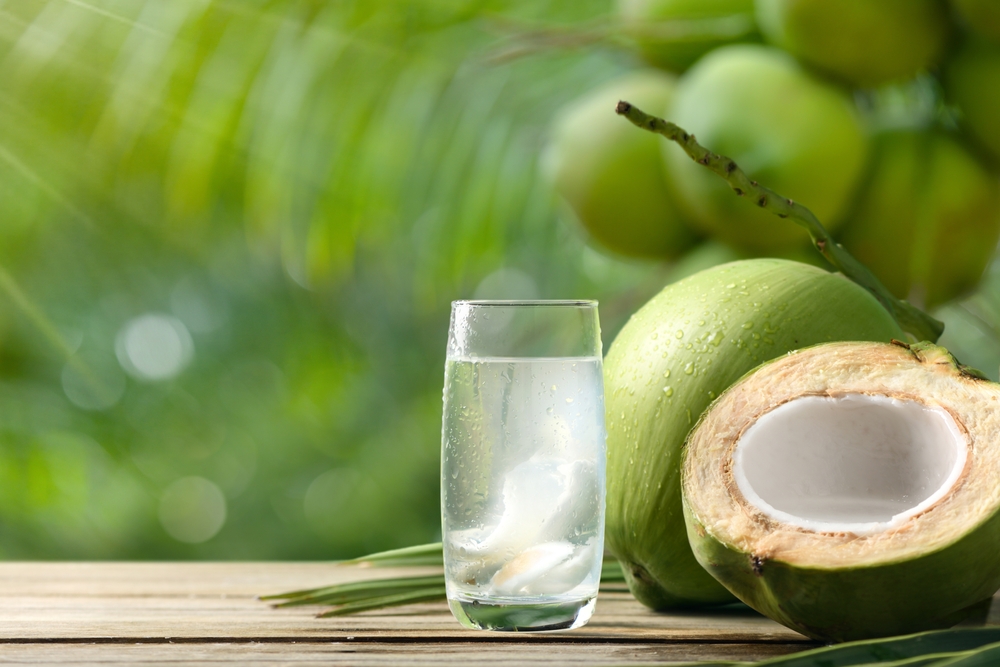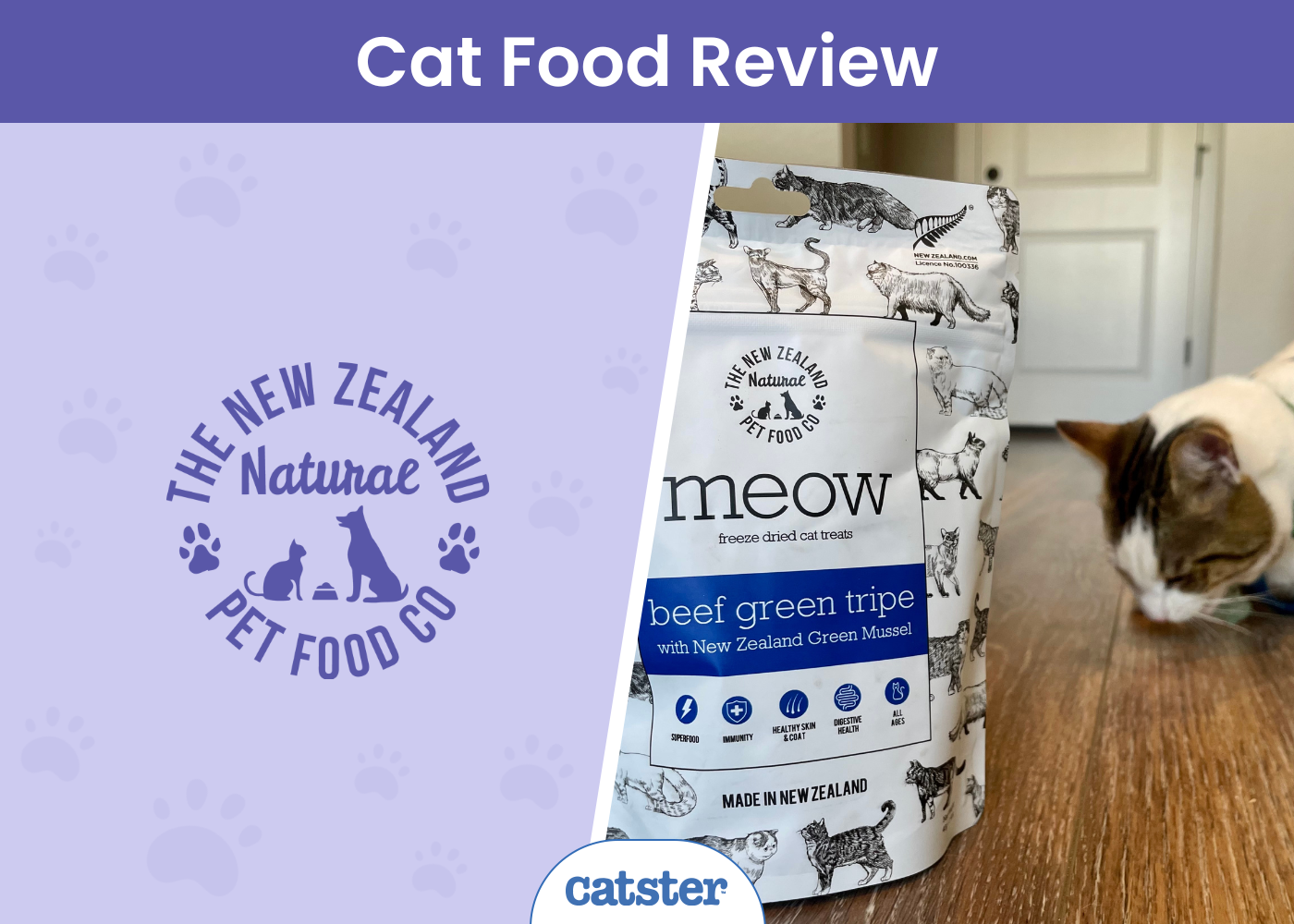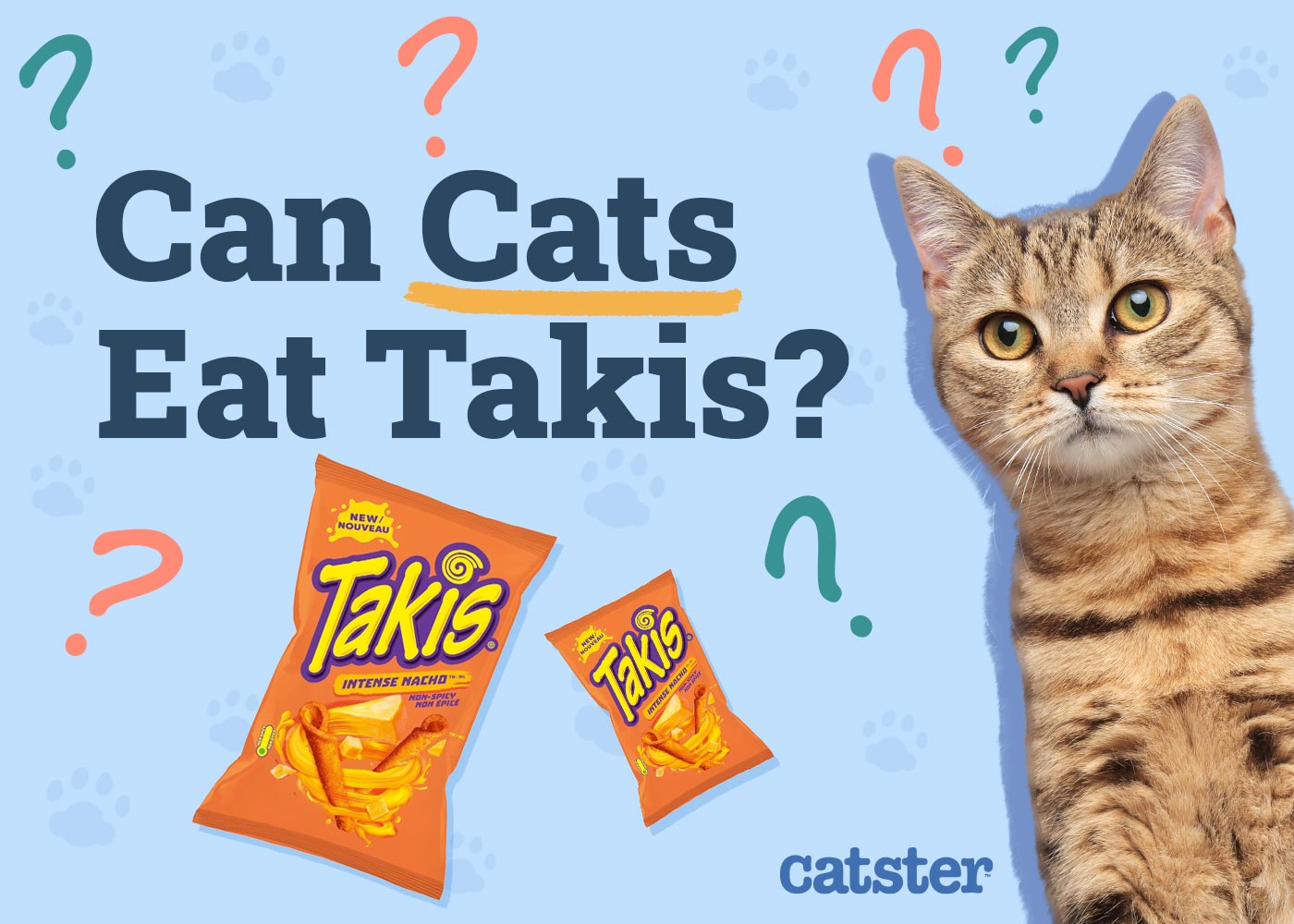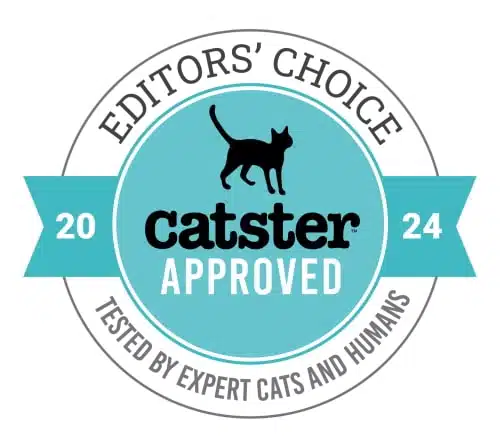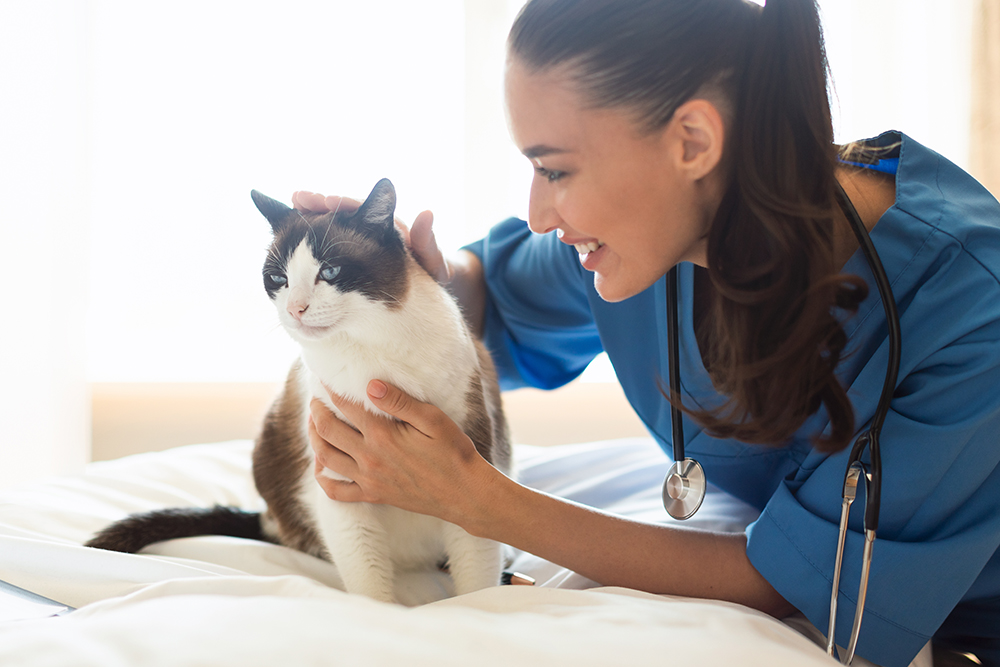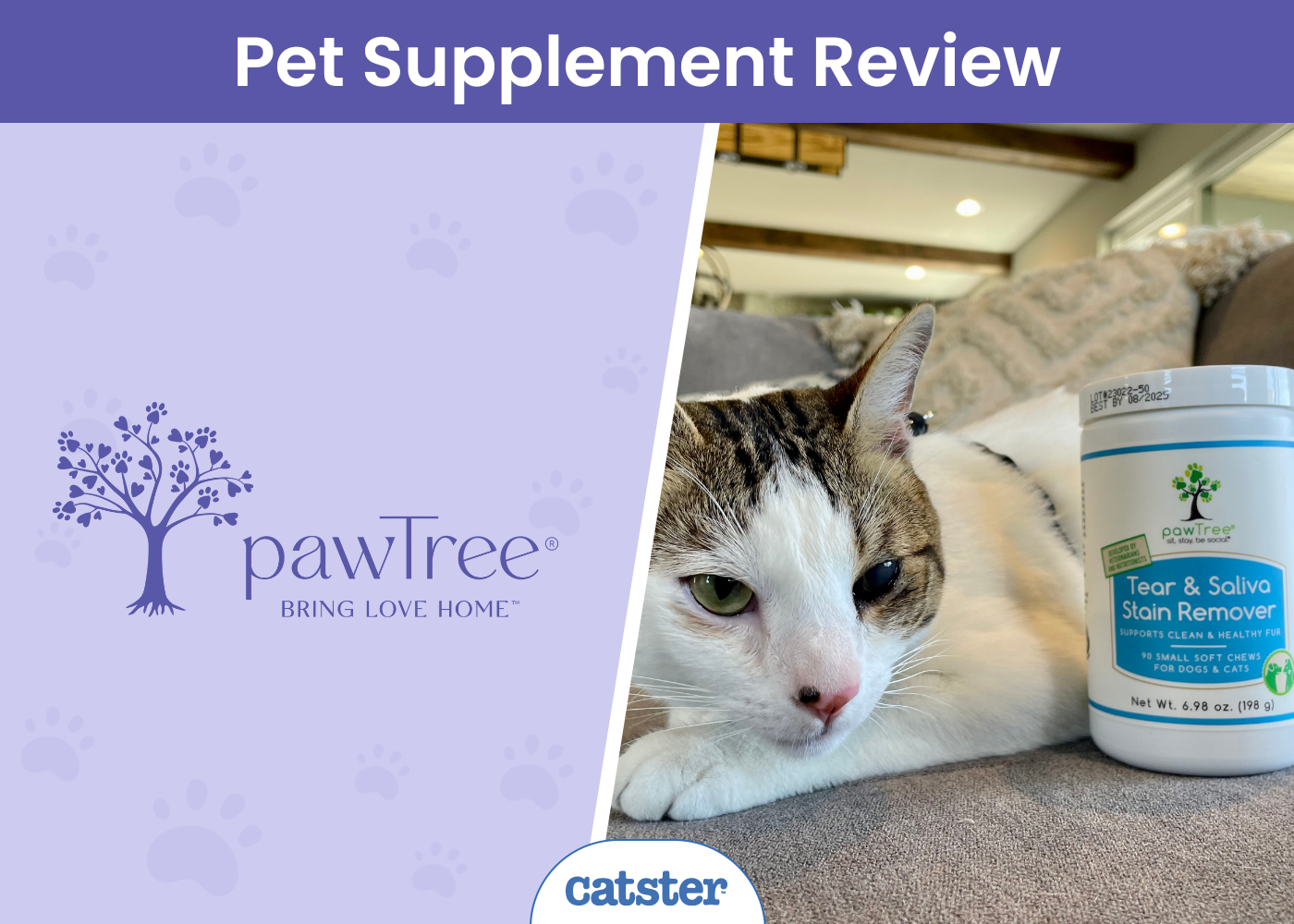To put it simply, yes, cats can eat kale. The popular leafy green is safe for your feline friend in raw and cooked form. If you found this article because your kitten snatched a piece of kale while you were chopping up your lunch salad, don’t panic! They will be fine.
Kale is not completely safe for cats, however. Like many human foods, a little kale is fine for cats, but a lot can cause health complications. In this article, we’re doing a deep dive to explain how much kale cats can eat, whether you should feed your cat kale, and other things every cat owner should know.

Human Food in Cat Diets
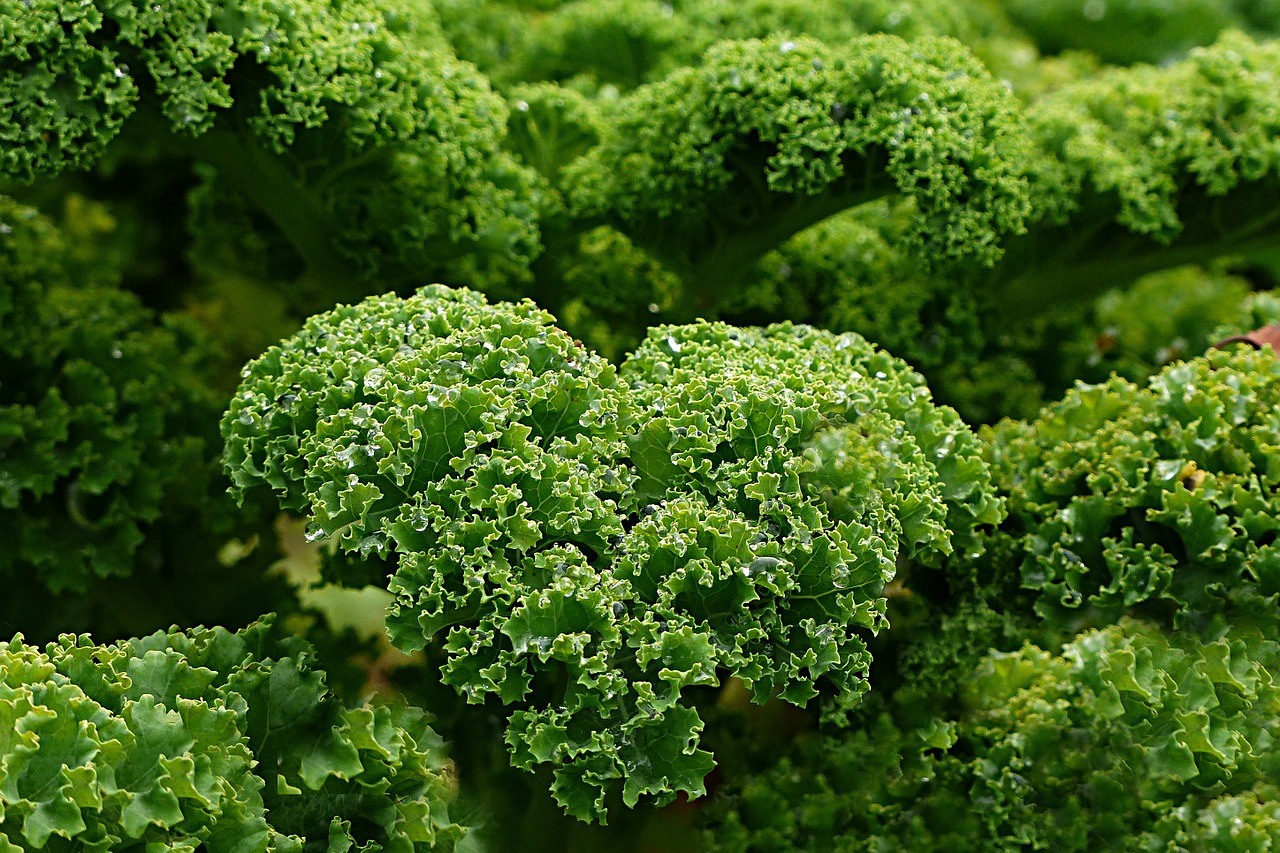
Cats should not consume most foods designed for humans. Their digestive systems are fundamentally different from ours: while we’re omnivores who get our nutrients from a varied diet, cats are obligate carnivores who fulfill their dietary needs mainly with meat.
Cats don’t have a dietary need for carbs, which makes up a big portion of many veggies and fruits, making it generally unsuitable for felines. However, cats may nibble on grass occasionally, and this is an instinctual behavior, although they cannot digest plant material.
So, while cats should live on animal protein-based food, there are other non-meat ingredients that are used in commercial cat food for the purpose of ensuring energy and flavors. However, it’s important to exercise caution and consult with a vet before offering your cat any human food as a treat, as many are not appropriate, and some may be toxic to cats.
What’s Up With Kale?
Did you know kale, broccoli, cauliflower, brussels sprouts, cabbage, and collard greens come from the same plant? It’s true! Brassica oleracea, or wild cabbage, is native to Europe. It’s transformed into some of the world’s most nutritious veggies through centuries of selective breeding. According to the ASPCA’s master list of toxic plants, it’s not poisonous to cats, but it’s only not listed as safe.
The ASPCA list is famous for an abundance of caution. It includes several other vegetables, including beets (beetroot, red beets, Roman kale, Swiss chard, sugar beets), and four other members of the Brassicaceae family: watercress, alyssum, hoary alyssum, and yellowrocket.
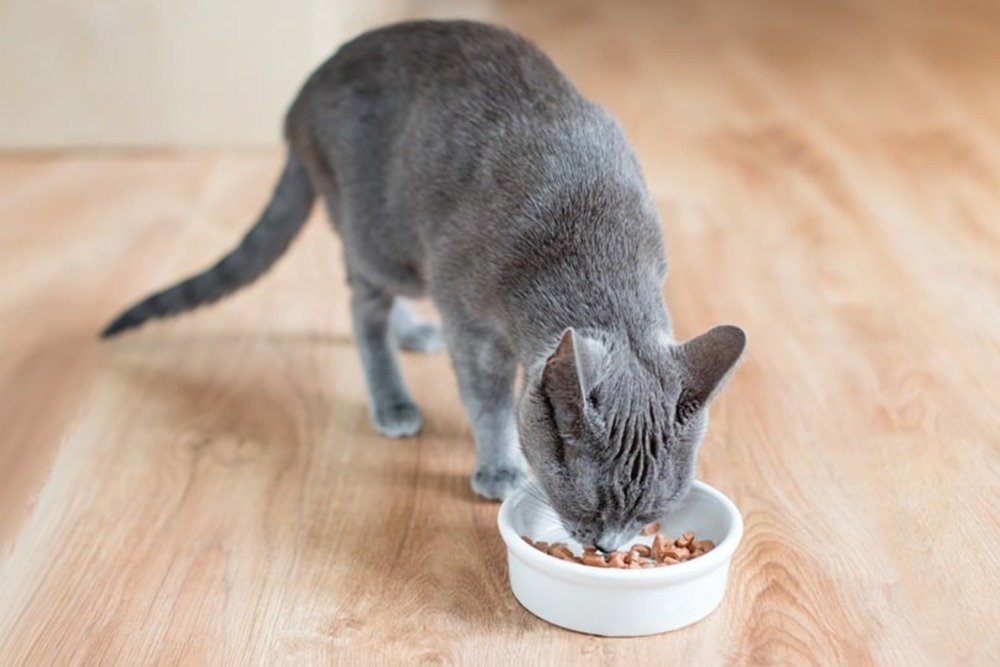
Kale is rich in fiber, which can help people regulate their calorie intake and support the digestive system, but we cannot extrapolate these benefits to cats, as they will simply not apply.
Veggies are not naturally a part of a cat’s diet and should certainly not become a regular treat, as they can lead to a stomach upset in many cats. Some veggies can be safe for cats, but this assumes strict moderation and very small amounts on special occasions. Please consult with your veterinarian about any queries on your cat’s nutrition.
Risks Associated With Kale
When it comes to kale, there are a few things to consider. First, there is a lack of scientific evidence to clearly state how much of a concern kale is for cats and at what amounts. This on its own is enough to advise caution, as it’s better to be safe rather than sorry.
Potential issues with kale are certain compounds the plant contains. One of them are isothiocyanates and calcium oxalate, which may cause gastrointestinal irritation but could also predispose some animals to kidney and urinary issues, particularly those with already present health issues in this organ system if ingested regularly or at significant amounts.
But remember, currently, we do not know the exact mechanism and extent of some of these effects and will update this information accordingly when new evidence becomes available.
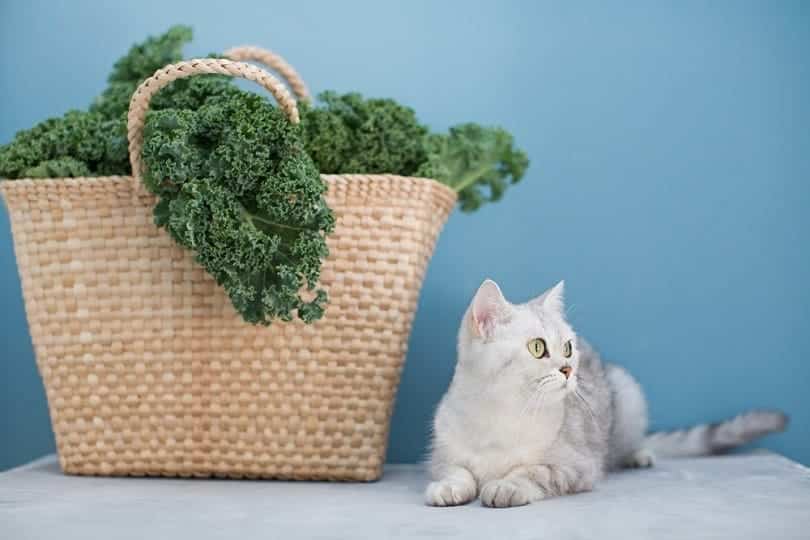
It’s not very likely that a small one off piece of kale will cause major health issues for your kitty, but we believe you should know all the risks in order to make an informed decision. If your cat is suffering from any illness, such as urinary stones or crystals, kidney disease, thyroid disease, or is on long-term medication, make sure to speak to your vet first.
Another potential health issue is the link between kale and hemolytic anemia. Again, we couldn’t find many reports of this in literature, but it is known that grazing animals are at risk of severe anemia, although not a common occurrence, when exposed to large amounts of kale or other brassica plants due to oxidative damage.
Heinz body anemia destroys a cat’s red blood cells, leading to fever, weakness, loss of appetite, discoloration of the skin and gums, and reddish-brown urine. If you observe any signs of illness in your cat, take them to the vet immediately.
Kale may also impact the absorption of iodine and normal function of the thyroid gland.

Should You Feed Your Cat Kale?
Not really. As discussed above, your cat will reap absolutely no benefits from this veggie, but kale may also lead to certain health issues in felines. Although the scientific evidence at this stage remains scarce when it comes to kale and cats specifically, we believe there is enough to conclude that kale should be avoided in cats. If your cat ate kale, please speak to your vet.
Besides, it’s important to understand your kitty is a carnivore and needs animal protein to thrive. If you want to reward them with treats, do so using species appropriate commercial cat treats or small amounts of plain cooked meat, such as chicken, turkey, or a hard boiled egg.
Alternatives to Leafy Greens
Better than offering veggie treats, cat grass is a great alternative that will also benefit your kitty. Try one of these, which can be found at any supermarket or health food store, and can easily be grown at home.
It was previously believed that cats eat grass because they are feeling sick and that they do it with the intention to vomit, but today, we know that eating grass is an instinctual behavior and was likely a mechanism to expel intestinal parasites. It may support the digestive function, and the majority of cats that eat grass show absolutely no signs of illness. Eating grass can cause vomiting, but many cats still indulge in it.
Things Your Cat Absolutely Should Not Eat
While we’re here, there are a few foods that you should make sure your cat never eats. The following foods are toxic to cats in almost any amount.
- Onions, garlic, and shallots: They are more likely to cause anemia than leafy greens.
- Grapes and raisins: They can cause kidney damage in some cats, and are also toxic to dogs.
- Chocolate: It is toxic to cats and dogs.
- Raw dough: This can cause painful and potentially fatal bloating.
- Lilies: They can lead to acute and often fatal kidney failure.
Learning about what your cat can and cannot eat is a crucial part of keeping them happy and healthy! Choosing a bowl to serve cat-friendly foods in is another important decision pet owners face. Satisfy the specific needs of your cat with the innovative design of the Hepper NomNom Cat Bowl. Learn why it’s our (and our cats!) favorite food and water dish here. At Catster, we’ve admired Hepper for many years and decided to take a controlling ownership interest so that we could benefit from the outstanding designs of this cool cat company!

Conclusion
Kale should not be offered to cats, as it’s not deemed safe for them. Vegetables in general are not a natural part of a cat’s diet, and they need an animal-based protein in order to thrive. Unfortunately, there is a limited amount of reputable and verified information when it comes to the amount of kale that is harmful to cats. Thus, it’s important to be aware of the several potential health risks associated with brassica family of veggies, such as their possible effect on the thyroid gland, urinary health, and the risk of hemolytic anemia.
It’s crucial to consult with your vet if your cat has eaten kale, whether it be a one-off occurrence or if they have been eating it more often, to ensure there are no detrimental effects on their health. There are many suitable and safe commercial cat treats and meat choices that your cat will thoroughly enjoy and benefit from at the same time.
Related Read:

